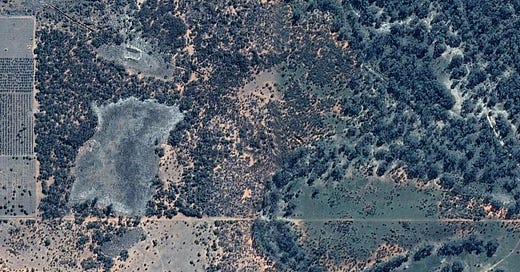Australia’s avoided deforestation carbon credits are “hot air”
A recent report by the Australian Conservation Foundation and the Australia Institute found that “avoided deforestation” projects do not represent genuine emissions reductions. In most cases the areas were not under any threat of being cleared. Avoided deforestation projects generate about 20% of the Australian government’s main climate change policy.
The report is titled, “Questionable integrity: Non-additionality in the Emissions Reduction Fund’s Avoided Deforestation Method”, and can be downloaded here.
Landholders were issued with carbon credits for not removing vegetation from their land. They were also paid from the government’s A$4.5 billion Emissions Reduction Fund.
38 million junk carbon credits
The ACF and AI report states that the government has spent A$310 million on more than 21 million carbon credits from avoided deforestation projects. The report estimates that avoided deforestation projects could generate as much as 38 million carbon credits over the 15-year crediting period.
The report notes that this isn’t the first time that the integrity of the avoided deforestation method has been questioned. In 2016, Paul Burke at the Australian National University wrote a Working Paper that raised concerns about the Emissions Reduction Fund. Burke wrote of “anyway projects” meaning that farmers would generate carbon credits from land they never intended to clear (mainly because the land is marginal and clearing is expensive).
“Hot air” and BS
The carbon credits were supposed to help meet climate targets. The reality is that they do not represent real cuts in emissions. The report describes them as “hot air”.
In a statement, Annica Schoo, the ACF’s lead environmental investigator and one of the authors of the report, said,
“Our findings demonstrate that the avoided deforestation method – which makes up one in five of all Australian carbon credits – is deeply flawed. The Morrison government should be embarrassed by its flagship climate policy. Australians want real climate action, not cheap tricks and hot air.”
Writing in The New Daily, Richard Denniss, Chief Economist and former Executive Director of The Australia Institute goes one further: “The polite term for the creation of dodgy carbon credits is ‘hot air’, but what it really is, is BS.”
Australia’s avoided deforestation carbon credits
The “avoided deforestation” method provides Australian Carbon Credit Units (ACCUs) for forest not cleared in Western New South Wales, but which has permission to be cleared.
The Clean Energy Regulator, which oversees the money handed out from the Emissions Reduction Fund, describes “avoided deforestation” as follows:
A project using this method helps to reduce the amount of greenhouse gas entering the atmosphere, because carbon remains stored in the trees as they grow, and the emissions that would have been created by clearing are avoided. The carbon stored in the trees is called carbon stock, while the net reduction in greenhouse gas emissions as a result of a project is called abatement.
Not enough bulldozers
Landholders had previously received permission to clear land under a state permit known as an Invasive Native Scrub Property Vegetation Plan. Between 2005 and 30 June 2010, the state issued permits to clear more than two million hectares of forest over the following 15 years.
Before the government offered to pay landholders for not clearing forest, they had been clearing between 1,000 and 2,500 hectares of land per year.
According to the Clean Energy Regulator, this rate of land clearing was about to increase dramatically. “They assumed the amount of land clearing in Western NSW was about to jump to somewhere between 21,000 and 130,000 hectares per year, and stay at this level for the next 15 years,” Denniss wrote. “An increase of this magnitude is implausible. It is unlikely there are enough bulldozers in Western NSW to get through even the lower bound estimate of the clearing.”
Denniss writes that,
Handing out cheques to people so they don’t do things they were never going to do is obviously problematic – for starters, it borders on fraud.
Beyond the sleight of hand, the biggest issue with Australia’s approach to emission reductions is that it’s just not working.
And he notes that emissions from electricity, industry, and transport are increasing in Australia. That, of course, is no surprise. It’s the inevitable result of relying on carbon offsets. Carbon offsetting exists specifically to allow emissions from burning fossil fuels to continue.







